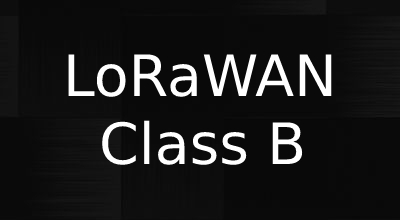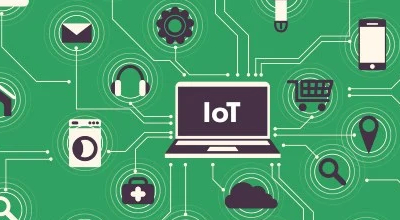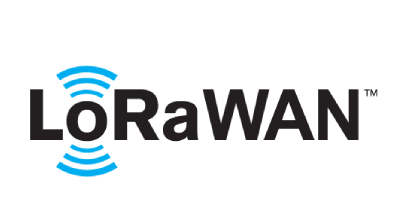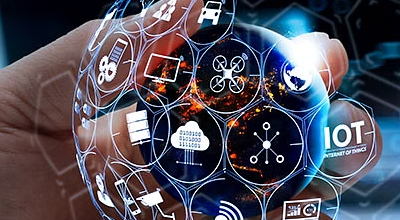
The Ultimate Guide to Industrial IoT
Industrial IoT Overview
The Internet of Things (IoT) is increasingly being used in industrial environments to improve efficiency, reduce costs, and increase safety. Some common ways in which IoT is used in industrial environments include:
- Monitoring and controlling industrial processes: IoT sensors and devices can be used to monitor and control various aspects of industrial processes, such as temperature, pressure, flow rate, and vibration. This allows manufacturers to optimize production and reduce waste.
- Predictive maintenance: IoT sensors can be used to monitor the condition of industrial equipment and predict when it is likely to fail. This allows maintenance to be scheduled in advance, reducing downtime and improving efficiency.
- Asset tracking: IoT devices can be used to track the location and movement of assets, such as shipping containers or vehicles, within an industrial environment. This can help improve inventory management and reduce losses.
- Environmental monitoring: IoT sensors can be used to monitor environmental conditions, such as air and water quality, within an industrial environment. This can help ensure compliance with environmental regulations and improve the safety of workers.
- Supply chain management: IoT devices can be used to track the movement and location of goods through the supply chain, allowing manufacturers to optimize their production and logistics processes.
These are just a few examples of the many ways in which IoT is being used in industrial environments. The technology has the potential to improve efficiency, reduce costs, and increase safety in a wide range of industrial applications.
Industrial Sensors
Industrial sensors are devices that are used to detect and measure various physical quantities in industrial environments, such as temperature, pressure, flow rate, and vibration. Industrial sensors are an essential component of many industrial processes, as they provide the necessary data for monitoring and controlling these processes.
Industrial sensors can be classified into different categories based on the type of physical quantity that they are designed to measure. For example, temperature sensors are used to measure temperature, pressure sensors are used to measure pressure, and flow sensors are used to measure the flow rate of liquids or gases. There are also sensors that are designed to measure other physical quantities, such as humidity, light intensity, and distance.
Industrial sensors are used in a wide range of applications, including manufacturing, energy production, transportation, and agriculture. They are an important part of the Internet of Things (IoT) and are often connected to networks of other sensors and devices, allowing for the real-time monitoring and control of industrial processes.
- Temperature sensors: These sensors are used to measure temperature in industrial environments. They can be used to monitor the temperature of equipment, products, or the environment.
- Pressure sensors: These sensors are used to measure pressure in industrial environments. They can be used to monitor the pressure of fluids, gases, or other substances.
- Flow sensors: These sensors are used to measure the flow rate of liquids or gases in industrial environments. They can be used to monitor the flow of fluids in pipes or tanks, or to measure the flow of gases in process systems.
- Level sensors: These sensors are used to measure the level of liquids or solids in industrial environments. They can be used to monitor the level of fluids in tanks or reservoirs, or to measure the level of solids in bins or hoppers.
- Vibration sensors: These sensors are used to measure vibrations in industrial environments. They can be used to monitor the condition of equipment, such as motors or pumps, and predict when it is likely to fail.
- Humidity sensors: These sensors are used to measure humidity in industrial environments. They can be used to monitor the humidity of air, products, or materials.
- Light sensors: These sensors are used to measure the intensity of light in industrial environments. They can be used to monitor the lighting conditions in a workspace or to detect the presence of light.
- Distance sensors: These sensors are used to measure the distance between two objects in industrial environments. They can be used to monitor the position of objects or to measure the distance between moving objects.
Industrial Actuators
Industrial actuators are devices that are used to convert an input signal into a mechanical movement or action. They are an essential component of many industrial processes, as they allow for the automation of tasks and the control of equipment.
There are many different types of industrial actuators, including hydraulic, pneumatic, and electric actuators. Hydraulic actuators use pressurized fluid to generate motion, while pneumatic actuators use pressurized gas. Electric actuators use an electric motor to generate motion.
Industrial actuators are used in a wide range of applications, including manufacturing, energy production, transportation, and agriculture. They can be used to control the movement of equipment, such as valves, pumps, and motors, or to automate tasks, such as the handling of materials or the assembly of products.
Industrial actuators are often connected to sensors and other devices, allowing for the real-time monitoring and control of industrial processes. They are an important part of the Internet of Things (IoT) and are used in conjunction with industrial sensors to enable the automation of tasks and the optimization of industrial processes.
Actuators and Sensors in Industrial IoT
Actuators and sensors are used in industrial companies to monitor and control various aspects of industrial processes. Sensors are used to detect and measure various physical quantities, such as temperature, pressure, flow rate, and vibration. Actuators are used to convert an input signal into a mechanical movement or action.
In many industrial applications, sensors and actuators are used together to enable the automation of tasks and the optimization of industrial processes. For example, sensors can be used to monitor the temperature of a process and actuators can be used to control the flow of coolant to maintain a stable temperature. Sensors can also be used to detect the presence of an object and actuators can be used to move the object to a different location.
Industrial sensors and actuators are often connected to networks of other sensors and devices, allowing for the real-time monitoring and control of industrial processes. They are an important part of the Internet of Things (IoT) and are used in a wide range of industrial applications, including manufacturing, energy production, transportation, and agriculture.



